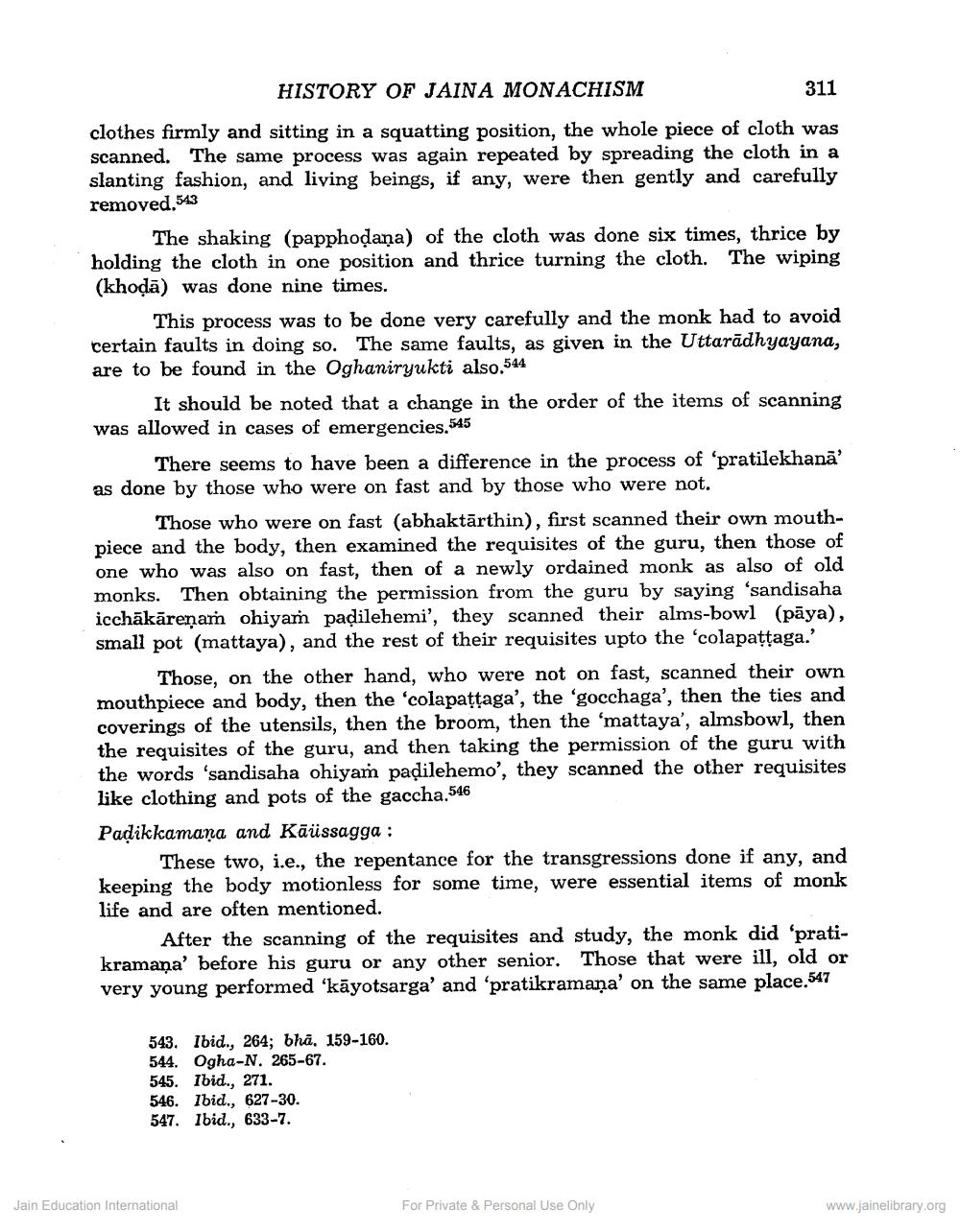________________
HISTORY OF JAINA MONACHISM
311
clothes firmly and sitting in a squatting position, the whole piece of cloth was scanned. The same process was again repeated by spreading the cloth in at slanting fashion, and living beings, if any, were then gently and carefully removed,543
The shaking (papphodana) of the cloth was done six times, thrice by holding the cloth in one position and thrice turning the cloth. The wiping (khoḍā) was done nine times.
This process was to be done very carefully and the monk had to avoid certain faults in doing so. The same faults, as given in the Uttaradhyayana, are to be found in the Oghaniryukti also.544
It should be noted that a change in the order of the items of scanning was allowed in cases of emergencies.545
There seems to have been a difference in the process of 'pratilekhana' as done by those who were on fast and by those who were not.
Those who were on fast (abhaktärthin), first scanned their own mouthpiece and the body, then examined the requisites of the guru, then those of one who was also on fast, then of a newly ordained monk as also of old monks. Then obtaining the permission from the guru by saying 'sandisaha icchäkarena ohiyam padilehemi', they scanned their alms-bowl (pāya), small pot (mattaya), and the rest of their requisites upto the 'colapattaga."
Those, on the other hand, who were not on fast, scanned their own. mouthpiece and body, then the 'colapaṭṭaga', the 'gocchaga', then the ties and coverings of the utensils, then the broom, then the 'mattaya', almsbowl, then the requisites of the guru, and then taking the permission of the guru with the words 'sandisaha ohiyam padilehemo', they scanned the other requisites like clothing and pots of the gaccha,546
Padikkamana and Käüssagga:
These two, i.e., the repentance for the transgressions done if any, and keeping the body motionless for some time, were essential items of monk life and are often mentioned.
After the scanning of the requisites and study, the monk did 'pratikramana' before his guru or any other senior. Those that were ill, old or very young performed 'käyotsarga' and 'pratikramaņa' on the same place,547
543. Ibid., 264; bha. 159-160. 544. Ogha-N. 265-67.
545. Ibid., 271.
546. Ibid., 627-30.
547. Ibid., 633-7.
Jain Education International
For Private & Personal Use Only
www.jainelibrary.org




